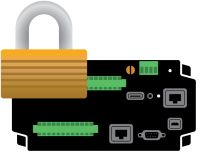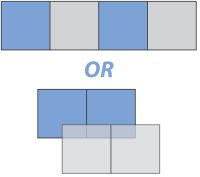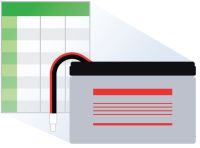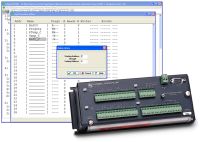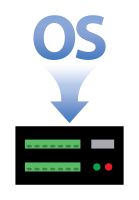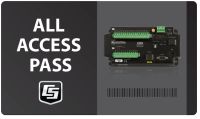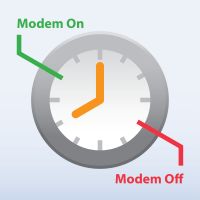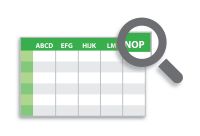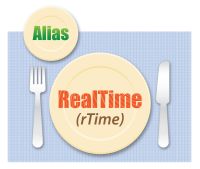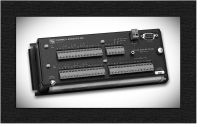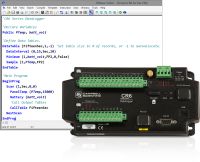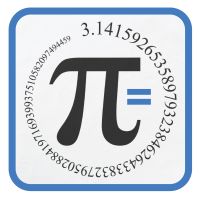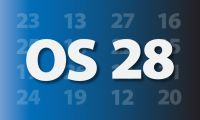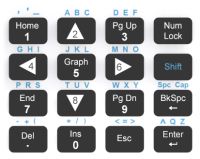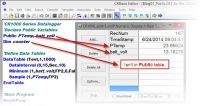Campbell Scientific ブログ 役立つハウツー情報と専門家のアドバイス
Displaying 1 - 20 of 21 articles authored by: Janet Albers
データロガーのセキュリティコードの使用方法
著者: Janet Albers | 最終更新日: 03/04/2025 | コメント: 4
セキュリティコードは、データロガーを保護する最も古い方法です。セキュリティコードは、悪意のないいたずら、ハッカー志望者によるデータの整合性に大損害を与える可能性のある行為を阻止することができます。この記事では、さまざまなセキュリティコードと、それらを使用してデータと設定を保護する方法について説明します。 データロガーのセキュリティは最大 3 つのレベルに設定できます。CR1000 より新しいデータロガー (CR6 や CR1000Xe を含む) の場合、有効なセキュリティ コードは 1 ~ 65535 です (0 はセキュリティなし)。3 つのレベルごとに固有のコードを使用することをお勧めします。 銀行に例えると、レベル 3 は銀行の正面玄関です。ロックされている場合、鍵なしでは誰も入れません。レベル 2 は受付エリアで、一部の情報にはアクセスできますが、すべての情報にはアクセスできません。レベル 1 は金庫です。金庫の正しい組み合わせがあれば、すべてにアクセスできます。 レベル 1 (金庫) はレベル 2 (受付エリア) を設定する前に設定する必要があります。また、レベル 2 はレベル 3 (正面玄関) を設定する前に設定する必要があります。レベルが 0 に設定されている場合、それよりも高いレベルもすべて 0 に設定されます。たとえば、レベル 2 が 0 の場合、レベル 3 も... 続きを読むDaylight Saving Time and Your Data Logger
著者: Janet Albers | 最終更新日: 02/27/2019 | コメント: 10
Do you need to do anything to your data logger or software to compensate for the beginning of daylight saving time? Read this short article to find out! Residents of many parts of North America, and various areas around the world, continue to observe the practice... 続きを読むUnderstanding CRBasic Program Compile Modes: Sequential and Pipeline
著者: Janet Albers | 最終更新日: 10/25/2017 | コメント: 4
Have you ever noticed a message saying that your CRBasic program compiled in PipelineMode or SequentialMode? What does it mean? And, when does it matter? In this article, we’ll look at these two modes. Sequential Mode Let’s start with the more straightforward mode: SequentialMode. The CRBasic Editor... 続きを読むHow Much Power Does Your Data Acquisition System Need?
著者: Janet Albers | 最終更新日: 05/04/2017 | コメント: 0
Are you wondering what size battery and solar panel you need to run all of the devices in your data acquisition system? How will you know if your power supply can keep pace with your needs? To get these answers, you will need to estimate the... 続きを読むHow to Replace “Undefined” or “N/A” with Your Real-Time Data Values
著者: Janet Albers | 最終更新日: 11/30/2016 | コメント: 0
If you use Campbell Scientific data logger support software to connect to your data logger, you may monitor your data from within the software. Have there been times when you’ve seen “Undefined” or “N/A” instead of your data values? What does that mean, and how... 続きを読むHow to Know when Your Data Logger Memory Is Getting Full
著者: Janet Albers | 最終更新日: 09/15/2016 | コメント: 2
It’s common for our customers to wonder when their data logger memory is going to be full, what will happen to their data when the memory is full, and what they should do about it. After all, your data is specific to your application and... 続きを読むThe Best Way to Edit Input Locations in Edlog Programs
著者: Janet Albers | 最終更新日: 06/08/2016 | コメント: 0
If you have one of our retired data loggers that uses the Edlog programming language, do you know the best way to change an Input Location name? It’s possible that you may want to use a different name or insert a name where one is... 続きを読むHelpful Hints for Updating Your Data Logger's OS
著者: Janet Albers | 最終更新日: 02/10/2016 | コメント: 0
Periodically we release new operating systems (OSs) that include new functions and instructions, as well as enhancements or bug fixes for existing functions and instructions. If you are asked to update your OS or need a newly added feature for your application, this article provides... 続きを読むHow to Programmatically Access Stored Data Values
著者: Janet Albers | 最終更新日: 01/13/2016 | コメント: 16
After you store measurements and other data in your data logger’s tables, how do you access that data to perform operations in your CRBasic program? Where can you get an all-access pass to your data? This article will explain how you can use a special... 続きを読むUse Time Intervals for More than Storing Data: Decisions and Control
著者: Janet Albers | 最終更新日: 12/30/2015 | コメント: 2
We all know that Campbell Scientific data loggers are really good at taking measurements and storing data. But did you know that they can also make decisions and control other devices? Often, device control is done based on a time interval. This article briefly illustrates... 続きを読むHow to Rename Field Names for Easier Data Identification
著者: Janet Albers | 最終更新日: 11/11/2015 | コメント: 0
When you view your measurement data in tabular format, such as in View Pro or similar software, are your column headings, or field names, helpful to you? At a glance, do your field names quickly identify the data in the columns? If not, you may... 続きを読むServing up the RealTime() Instruction with a Side of Alias Declarations
著者: Janet Albers | 最終更新日: 10/07/2015 | コメント: 2
CRBasic has a full menu of instructions to help you write or edit your data logger program. This article offers a main course of scheduling your data logger actions using the RealTime() instruction with a side dish of making your program easier to read with... 続きを読むMaking Sense of an Edlog Program File for Your Retired Data Logger
著者: Janet Albers | 最終更新日: 09/09/2015 | コメント: 0
Our retired data loggers are still in use, and some of them use the Edlog programming language. Do you have an Edlog data logger with a .dld compiled program file that you don’t know how to read? Does your .dld file have codes that you... 続きを読む5 Things to Know before Discussing Your Data Logger Programming Issue
著者: Janet Albers | 最終更新日: 08/26/2015 | コメント: 0
If you need help programming a Campbell Scientific data logger, here are some things you can do to have a more productive conversation with a Customer Support and Implementation Engineer. At a minimum you’ll want to know: What data logger you’re working with—such as a CR6, CR1000,... 続きを読むThe Benefits of Using Constants in CRBasic
著者: Janet Albers | 最終更新日: 08/05/2015 | コメント: 0
Why should you use a Constant declaration in your CRBasic program? What is a Constant anyway? In a previous article ("Going Public with Your Variables in CRBasic"), we talked about the Public and Dim variable declarations. Variables are just that—variable; they change. Constants, on the other hand, don’t change;... 続きを読む4 New Ways to Use Array Notation: Copying or Transposing
著者: Janet Albers | 最終更新日: 07/21/2015 | コメント: 0
Copying or transposing has become easier with OS 28 (CR6 OS 1). This new operating system enables you to copy portions of an array to a new location, such as when transposing rows and columns. In this example we start with A(3,2) (3 rows, 2 columns) initialized as... 続きを読む4 New Ways to Use Array Notation: Complex Scaling
著者: Janet Albers | 最終更新日: 07/01/2015 | コメント: 0
You can perform more complex scaling in an array without needing a For/Next loop. To take advantage of this feature, use OS 28 (CR6 OS 01) or later. In this example program, a unique set of multipliers and offsets is applied to the column of an... 続きを読む4 New Ways to Use Array Notation: Initializing Multi-Dimensional Arrays
著者: Janet Albers | 最終更新日: 06/10/2015 | コメント: 0
Initializing variables within an array is more flexible than ever with OS 28 (CR6 OS 1). You can think of a single dimensioned array as numbers in a column. Two dimensions, in comparison, puts numbers in rows and columns. The third dimension is a page. For example:... 続きを読むHow to Find and Insert Characters Using a Keyboard Display
著者: Janet Albers | 最終更新日: 05/29/2015 | コメント: 0
A keyboard display, such as the external CR1000KD or on-board display of the CR850 and CR3000, is a powerful tool you can use in the field. A keyboard display enables you to interrogate and program a data logger independent of other telecommunication links. Most keys on... 続きを読むGoing Public with Your Variables in CRBasic
著者: Janet Albers | 最終更新日: 05/29/2015 | コメント: 0
When programming your Campbell Scientific data logger, have you ever wondered whether you should be using a Dim variable declaration or a Public one? What is the difference between them, and when is it best to use each one? Dim and Public variables are temporary holding... 続きを読む











